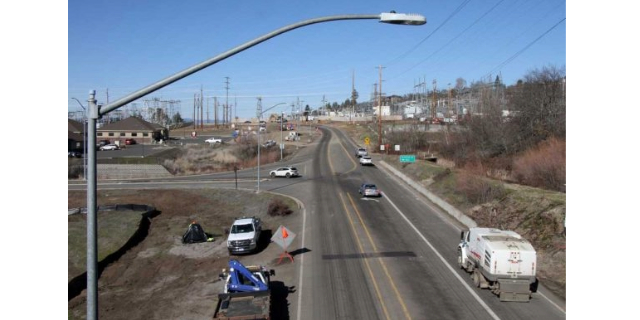Trees come down: Ashland hustles to protect its forestland, community
Published 11:00 am Monday, April 1, 2024

- A tree faller with Timberline Helicopters cuts down a dead fir tree near the White Rabbit Trailhead in Ashland on Friday.
Tree-cutting continues in earnest this week on city of Ashland forestland, where thousands of trees affected by heat, drought and beetles have died, creating a fire danger and fall hazard.
Trending
Two tree fellers with Timberline Helicopters hustled at Siskiyou Mountain Park Friday to cut down trees that were a foot or two across.
Chris Chambers, forestry officer for the city, escorted journalists into the work area from the White Rabbit Trailhead south of downtown. They hiked in about three-quarters of a mile.
Along the way, Chambers posted signs warning hikers, bikers and others to stay away. People often don’t look up, he said, where these days they would see many dead trees.
Trending
“We gotta do something about this now,” he said.
Trees on portions of about 500 acres of city forestland are to be cut. It’s a race against time.
“We desperately need to avoid a severe fire right next to our community,” Chambers said in an interview the day before. “We really need to be acting quickly and appropriately to reduce the fire risk.”
The tree cutting began Wednesday in lower Siskiyou Mountain Park and continues this week in the lower Ashland watershed above Lithia Park. That will be followed by helicopter and log truck operations to remove logs over a weeks-long period beginning as soon as April 14. Brush burning might take place before summer. Popular trails will be closed.
Cost of the work is $1.3 million, with $686,000 of that amount expected to be offset by the sale of the cut timber, according to Ashland.news. The Lomakatsi Restoration Project, an Ashland-based forest restoration organization, secured $150,000 to help with cleanup and replanting using more fire-resistant native trees and plants.
Chambers and Marko Bey, Lomakatsi’s founder, sat down for an interview Thursday.
Bey emphasized that a goal of the work is to restore the forest to health, something he called “ecological restoration.” That can be helped by the use of native plants and the reintroduction of low-intensity fire along the forest floor.
“There’s jobs created in ecosystem restoration,” Bey said. “It’s building a restoration economy. There’s socioeconomic benefits.”
He termed the tree die-offs “an epidemic.”
Douglas fir trees at lower elevation are dying at a fast rate from Northern California to the southern Willamette Valley due to heat, drought and beetles. Climate change and fire suppression that allows fuels to build up on the forest floor figure into it, along with past practices of replanting logged areas with Douglas firs in locations that are now heat- and water-stressed. The trees are less able to cope with heat and drought, compared with native pines, oaks and madrone.
The result is a tinderbox.
“If we don’t intervene, something will happen,” Chambers said. “It’s not any fun being at the forefront of this.”
The landscape in just the last two years has been significantly altered, according the Chambers. The city has thinned its forested land in the past, but the scale of this tree-cutting is larger.
“This isn’t a new thing, but that was more proactive and this is more reactive,” he said. “That makes it a little more challenging and definitely makes it more urgent.”
“I think we’ve been conservative in this project, but it’s still going to be a shock for people when it’s done,” he added.
For project updates, visit ashland.or.us.









